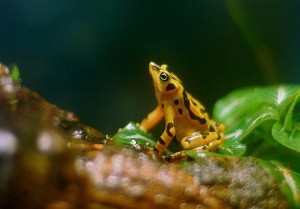WEDNESDAY, 30 MARCH 2011

The research, published in Science, highlights the importance of zoological gardens in species conservation, and encourages them to link up and pool their populations for use in captive breeding [1] . The combination of this approach with ‘in situ’ conservation measures is vital for the prevention of species extinction, especially for species whose habitats are severely threatened. The researchers also advocate implementing breeding specialism in zoos, as focusing on breeding a small number of species generally increases breeding success.
Scientists stress that zoos should not be treated as last resort emergency wards, using the last surviving, weakened members of the species for breeding. Instead, breeding programmes should be implemented at an early stage before the risk status of a species becomes too high.
Captive breeding programmes have a key role in maintaining the success of species conservation, and have lowered the risk statuses of many endangered species. They also provide demographic data on factors such as the onset of sexual maturity, which are urgently needed for evaluating the chances of survival that a species faces.
Written by Anand Jagatia
